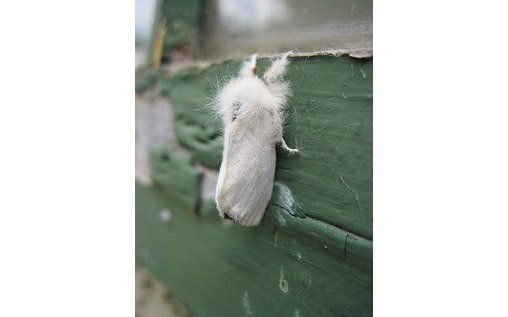
AUGUSTA, Maine — Have you seen fat, fuzzy white moths around your lights over the past three weeks? If so they may be Browntail Moths (they have brown bodies).
The Maine Forest Service, Maine Department of Agriculture, Forestry and Conservation, would like the public’s help in tracking the moth flight. To assist, go to https://www.surveymonkey.com/r/mebrowntail to fill out a survey on where and how many moths you saw.
The caterpillar stage of this insect feeds on the foliage of many hardwood trees and shrubs in May and June. They particularly like oak and apple trees. Caterpillar feeding causes reduction of growth and occasional mortality of valued trees and shrubs.
While feeding damage may cause some concern, the primary human impact from the browntail moth is the result of contact with poisonous hairs found on the caterpillars. Contact of these hairs with human skin causes a rash similar to poison ivy that can be severe on some individuals. People can also experience respiratory distress from inhaling the microscopic hairs that blow around in the air.
Over the past three decades the browntail has been a problem along the midcoast and islands of Maine. The population is now spreading further inland, and one report cited them near Millinocket. Many people in these recently colonized areas are unaware of the impact browntail can have on them or their trees. Knowing where moths have been seen in large numbers can help us give people a heads-up as to what they may have to deal with next spring.
Controlling the moths is not practical. If you are seeing large numbers of white moths learn about what you can do if the caterpillars end up in your yard.
For more information go to: http://www.maine.gov/dacf/mfs/forest_health/invasive_threats/browntail_moth_info.htm, call the Maine Forest Service at 287-2431 or your local Extension office.







